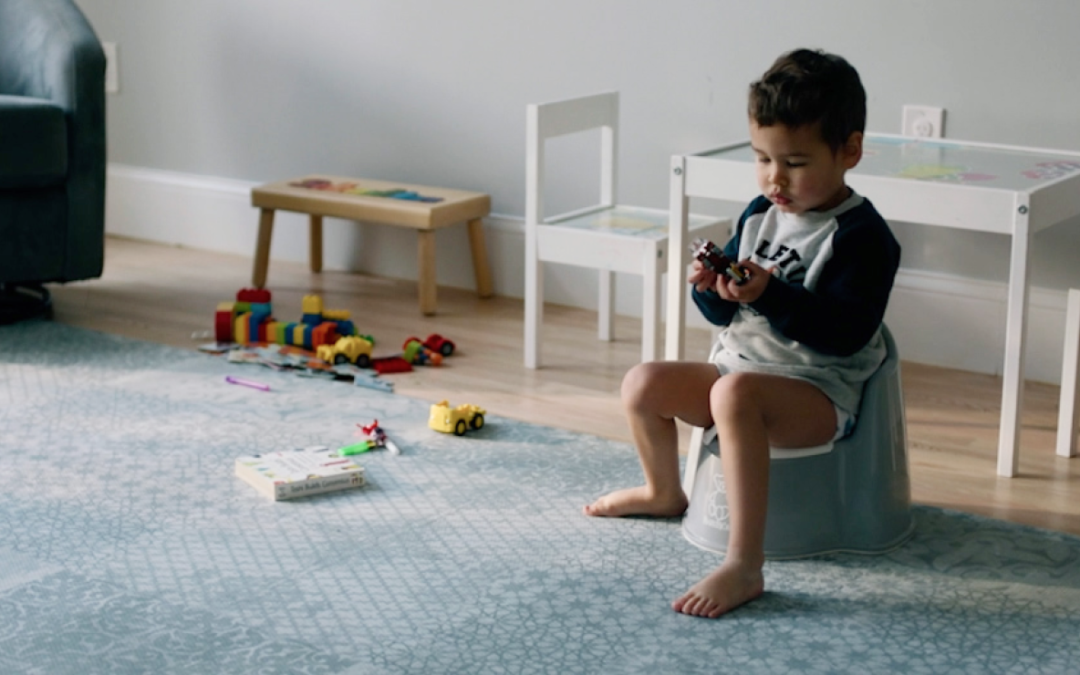With potty training, timing is everything. Starting too early, or pushing a child who isn’t ready to start, will only prolong the process and increase frustration on both sides.
So, what does “ready to potty train” look like? Well, biologically speaking, it largely depends on their age, which usually comes between 24 and 30 months. This is when they gain control over their pelvic floor muscles allowing them to develop a strong and accurate sense of their urges—this part is hard for us to see from the outside, but, thankfully, children also give other, more developmental signs they are ready as well.
According to Quiara Smith, Pediatric Occupational Therapist and Instructor for our new class, Potty Training: The Stress-Free Guide to Success, generally your child will be ready for the potty training process if they are over the age of 24 months and showing most of these signs:
They show a lot of interest in the potty and activities related to the potty. Maybe they’ve been asking a lot of questions about the potty or they have been curiously following you into the bathroom. This interest is a good sign that they aren’t feeling nervous or dysregulated by the potty, which will help them successfully engage with the potty learning process.
If your child isn’t showing interest yet, check out our Pre-Potty Training class, for fun and easy ways to engage them with the potty.
They tell you either via words or gestures, when they have a wet or dirty diaper or that they have to use the bathroom. 50% of the time, children who are ready to potty train, indicate to their parents they have a wet or dirty diaper.
They like following 2-3 step directions. This is important because going to the potty requires more than just sitting on the toilet. There’s a lot of steps that need to be completed in a certain order — walking to the potty, pulling down your pants, pulling down your underwear, wiping, pulling everything back up, then washing and drying your hands — so you need to make sure your child has the ability to sequence events. Of course, a little prompting and assisting is okay at this age.
They show a basic understanding of cause & effect. This means they will be able to not only accurately understand the urge they are feeling, but also know what to do about it. Before the potty learning process, you will probably see them working through cause and effect in their pretend play.
They are having more and more dry diapers, and can stay dry for 2 hours at a time. If your child is waking up dry from their naps 3-4 times a week, this is an especially good indicator they are ready to begin.
They demonstrate bladder control for brief moments or even minutes at a time. If you notice they communicate that they have to go, you check and notice they are dry, but then a few minutes later, you check again, and notice they have soiled their diaper — That means they have exhibited some sort of control between feeling the urge and actually going to the bathroom.
They are able to independently dress and undress, particularly with pants. This means you may notice they can put on their pants with some assistance or are able to pull their pants up and down completely independently.
Remember, some children may not show all of these signs, but they should be showing most of them before you start on your potty training journey. If your child is not showing these signs, you can still prepare them for what’s to come.
Think your toddler is ready to start potty training? Our on-demand class Potty Training: The Stress-Free Guide to Success, will walk you through everything you need to know. Including: how to get started, a specific step-by-step method to train your child in a matter of days, what type of potty to use, how to teach your toddler to breathe correctly (protect those pelvic floors!), and how to get through challenges and regressions that might pop up along the way.

